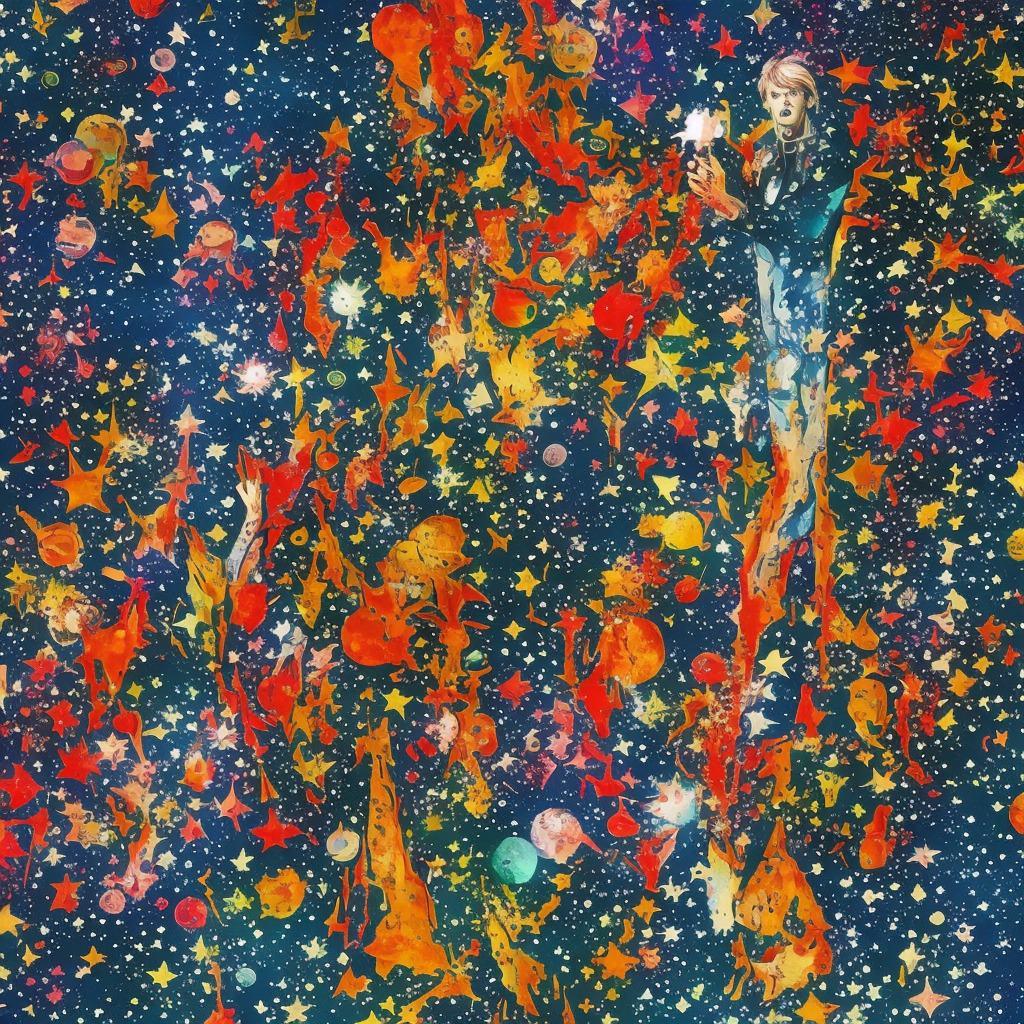Embarking on a journey through the enigmatic essence of Uriah Heep’s “Lady in Black,” we uncover a tapestry woven with themes of solace, introspection, and the quest for peace amid the tumult of the human condition. This song, a cherished artifact from the band’s seminal album “Salisbury,” released in February 1971, stands as a testament to the enduring allure of rock balladry that transcends mere musical composition to touch the soul’s deepest recesses.
“Lady in Black” unfurls a narrative rich with metaphor, where the titular character emerges not merely as a figure but as a symbol of purity, essential joy, and the beacon of hope in the dark corridors of life’s trials. Ken Hensley, the mastermind behind this piece, draws from a deeply personal well of inspiration, rooted in an encounter on Salisbury Plain. This meeting with a solitary figure clad in black amidst the vast expanse of the English countryside sparked the creative flame that would culminate in this haunting melody.
The song’s lyrical journey invites listeners into a dialogue between the narrator and the Lady in Black, a conversation that meanders through the realms of life, love, and existential musings. It’s in this exchange that Hensley weaves a fabric of hope against the backdrop of a world fraught with fear and uncertainty, prevalent in the early 1970s. The song’s essence encapsulates a yearning for the cessation of conflict and a harmonious communion with the elemental joys of existence.
Beyond Conventional Narratives: The Enduring Impact of Uriah Heep’s Unique Classic
“Uriah Heep’s ‘Lady In Black’: A profound narrative of self-discovery and spirituality in a war-torn landscape that captivated Europe and contributed to the band’s 40 million album sales.”
 The song “Lady In Black” by the rock band Uriah Heep has made a significant cultural impact since its release in 1971. It’s a track that stands out in the band’s discography for its poetically poignant narrative, penned by band member Ken Hensley. The song’s protagonist ventures through a desolate, war-torn landscape, and encounters a goddess-like figure who provides comfort and guidance, a storyline that has resonated with listeners across several generations. A testament to its cultural influence, “Lady In Black” found substantial success in Germany, where it emerged as a major hit, bolstering the band’s presence in the European rock scene.
The song “Lady In Black” by the rock band Uriah Heep has made a significant cultural impact since its release in 1971. It’s a track that stands out in the band’s discography for its poetically poignant narrative, penned by band member Ken Hensley. The song’s protagonist ventures through a desolate, war-torn landscape, and encounters a goddess-like figure who provides comfort and guidance, a storyline that has resonated with listeners across several generations. A testament to its cultural influence, “Lady In Black” found substantial success in Germany, where it emerged as a major hit, bolstering the band’s presence in the European rock scene.
The band members’ views on the song reflect its significance in their body of work. Ken Hensley, the key lyricist, managed to weave themes of spirituality, mortality, and self-discovery into the song’s narrative, steering clear of the conventional love song track. This unique approach to songwriting, combined with its resonating content, contributed to the track’s enduring success.
Fan reactions to “Lady In Black” mirror the band’s sentiments. The song’s spiritual journey and the mysterious, comforting character of the lady in black have left a lasting impact on listeners. Some fans share their emotional responses to the song, emphasizing its profound themes and appreciating its departure from typical love songs. Even years after its release, “Lady In Black” continues to inspire reactions and discussions among fans, solidifying its status as a timeless classic.
Uriah Heep, with their distinctive blend of hard rock, heavy metal, and progressive rock, has sold over 40 million albums worldwide. “Lady In Black”, with its deep narrative and unforgettable melody, has undeniably contributed to the band’s enduring legacy. It is a song that has stood the test of time, continuing to engage and inspire listeners nearly half a century after its initial release.
Enduring Popularity: A Testament to ‘Lady in Black’
“‘Lady in Black’ by Uriah Heep: Unawarded, yet unforgettable. A classic hit, its undying popularity and myriad interpretations keep the band’s legacy alive.”
 Despite being one of Uriah Heep’s most popular songs, “Lady in Black” hasn’t received specific awards or accolades, and its presence in movies, TV shows, and video games is not documented. However, its popularity cannot be undermined. Released as a part of the album ‘Salisbury’ in 1971, the song was re-released as a single a decade later in 1981, in Germany and the Netherlands. It was during the late 1970s when the song made its mark in Germany, becoming a significant hit.
Despite being one of Uriah Heep’s most popular songs, “Lady in Black” hasn’t received specific awards or accolades, and its presence in movies, TV shows, and video games is not documented. However, its popularity cannot be undermined. Released as a part of the album ‘Salisbury’ in 1971, the song was re-released as a single a decade later in 1981, in Germany and the Netherlands. It was during the late 1970s when the song made its mark in Germany, becoming a significant hit.
Over the years, many music enthusiasts have tried their hand at covering the song. A quick internet search reveals numerous renditions by both amateur and professional musicians worldwide. One notable cover is by Aline Happ, who added a Celtic Folk spin to it and released it on her debut solo album, “Branching Out” on May 31, 2023.
While “Lady in Black” might not boast of a trophy cabinet, its contribution to Uriah Heep’s fame and its continued relevance in popular culture makes it a classic worth remembering. Its poetic lyrics and catchy tune continue to resonate with audiences, keeping the legacy of Uriah Heep alive.
Sustaining Relevance Without Tradition: The Unconventional Journey of ‘Lady in Black’
“Uriah Heep’s ‘Lady in Black’ transcends the need for a traditional music video, flourishing through captivating live performances, fan-generated content, and its profound narrative. Celebrated for its lyrical depth and musical simplicity, the song continues to captivate audiences even after decades. This enduring appeal is a tribute to the band’s dedication, the resonant themes in the song, and the creative interpretations of fans and artists alike.”
 While there isn’t a traditional music video for “Lady in Black,” Uriah Heep’s live performances, unofficial fan-made videos, and other visual presentations associated with the song have played a key role in its continued relevance. The live versions, in particular, are characterized by energetic performances and engaging stagecraft, often featuring the band members shrouded in moody, atmospheric lighting that perfectly complements the song’s mysterious themes.
While there isn’t a traditional music video for “Lady in Black,” Uriah Heep’s live performances, unofficial fan-made videos, and other visual presentations associated with the song have played a key role in its continued relevance. The live versions, in particular, are characterized by energetic performances and engaging stagecraft, often featuring the band members shrouded in moody, atmospheric lighting that perfectly complements the song’s mysterious themes.
The song’s evocative narrative has inspired numerous fan-made videos, with many choosing to visually represent the song’s story through art and animation. These videos and the live performances have undoubtedly contributed to the song’s enduring appeal, offering fans new ways to connect with the track beyond just the music.
In terms of reception and critical analysis, “Lady In Black” has been praised for its lyrical depth and musical simplicity. Critics often laud the song’s effective use of only two chords, which creates an entrancing musical backdrop for the song’s profound narrative. The song’s enduring popularity is a testament to its resonant themes and memorable melody, which continue to captivate listeners to this day.
The song’s production involved the band’s primary members during the time – David Byron, Ken Hensley, Mick Box, Paul Newton, and Ian Clarke. Produced by Gerry Bron, the song was recorded in Lansdowne Studios, London, furthering the band’s well-established reputation for delivering high-quality rock compositions.
As for celebrity cameos, while “Lady In Black” doesn’t feature any well-known names, it’s worth noting that the song has been covered by various artists over the years. These interpretations, while not featuring in the song’s official capacity, have helped to extend the song’s reach and influence across different genres and fanbases.
In conclusion, while “Lady In Black” may not have a conventional music video or celebrity appearances, it has managed to maintain its popularity through live performances, fan interpretations, and its compelling narrative. The band’s dedication to their craft and the song’s profound themes have ensured that “Lady in Black” continues to resonate with listeners, decades after its original release.
A Testament to Timeless Appeal: The Uriah Heep Phenomenon
“Uriah Heep’s “Lady in Black”- a 1971 classic that shaped the European rock scene. Its poetic composition, chart-topping success, and enduring popularity in the digital age make it more than just a song- it’s a cultural phenomenon that continues to influence music history.”
 The song “Lady in Black” by Uriah Heep was released as part of their album ‘Salisbury’ in 1971 and later re-released as a single in Germany and the Netherlands in 1981. The song’s success was particularly significant in Germany where it emerged as a big hit in the late 1970s, contributing to Uriah Heep’s massive success in the country. This popularity cemented the band’s presence in the European rock scene, particularly among heavy metal and hard rock fans.
The song “Lady in Black” by Uriah Heep was released as part of their album ‘Salisbury’ in 1971 and later re-released as a single in Germany and the Netherlands in 1981. The song’s success was particularly significant in Germany where it emerged as a big hit in the late 1970s, contributing to Uriah Heep’s massive success in the country. This popularity cemented the band’s presence in the European rock scene, particularly among heavy metal and hard rock fans.
“Lady in Black” was credited to Ken Hensley, whose poetic composition in the song is often praised by fans and critics alike. The song’s chart performance was notable, helping to establish Uriah Heep as one of the top bands in the 1970s alongside Black Sabbath, Deep Purple, and Led Zeppelin. Despite the absence of specific awards or accolades for the song, its financial success is evident in Uriah Heep’s impressive record sales, with over 40 million albums sold worldwide. This commercial achievement demonstrates the song’s significant role in the band’s career trajectory.
The popularity of “Lady in Black” extends beyond traditional measures of chart performance and sales. The song’s narrative of a man wandering through war and encountering a goddess-like entity has resonated with listeners, continuing to generate discussion and engagement on various social media platforms. This high level of audience engagement is also reflected in the song’s performance on streaming platforms, highlighting its continued relevance in the digital age.
The song’s cultural impact is further evidenced in its influence on other artists, with numerous covers found online. These covers range from professional to amateur performances, demonstrating the song’s wide reach and appeal. Particularly noteworthy is Aline Happ’s Celtic Folk rendition of the song, released as part of her debut solo album, “Branching Out.”
In conclusion, “Lady in Black” is more than just a song – it is a cultural phenomenon that has shaped Uriah Heep’s career and left an indelible mark on the rock music scene. Its chart success, commercial performance, and enduring popularity among fans bear testament to its significant role in music history.
One lonely Sunday morning
Her long hair flowing
In the midwinter wind.I know not how she found me
For in darkness I was walking
And destruction lay around me
From a fight I could not win
Ah, ah-ah, ah-ah, ah-ah-ah
Ah, ah-ah-ah, ah-ah-ah
She asked me name my foe then
I said the need within some men
To fight and kill their brothers
Without thought of love or God
And I begged her, give me horses
To trample down my enemies
So eager was my passion
To devour this waste of life
Ah, ah-ah, ah-ah, ah-ah-ah
Ah, ah-ah-ah, ah-ah-ah
But she wouldn’t think of battle that
Reduces men to animals
So easy to begin
And yet impossible to end
For she’s the mother of all men
Who counselled me so wisely then
I feared to walk alone again
And asked if she would stay
Ah, ah-ah, ah-ah, ah-ah-ah
Ah, ah-ah-ah, ah-ah-ah
Oh, lady, lend your hand outright
And let me rest here at your side
“Have faith and trust in peace”, she said
And filled my heart with life
There is no strength in numbers
Have no such misconception
But when you need me
Be assured, I won’t be far away
Ah, ah-ah, a-ah, ah-ah-ah
Ah, ah-ah-ah, ah-ah-ah
Thus, having spoke, she turned away
And though I found no words to say
I stood and watched until I saw
Her black coat disappear
My labour is no easier
But now I know I’m not alone
I’ll find new heart each time
I think upon that windy day
And if one day she comes to you
Drink deeply from her words so wise
Take courage from her as your prize
And say hello from me
Ah, ah-ah, a-ah, ah-ah-ah
Ah, ah-ah-ah, ah-ah-ah
Ah, ah-ah, a-ah, ah-ah-ah
Ah, ah-ah-ah, ah-ah-ah
Ah, ah-ah, a-ah, ah-ah-ah
Ah, ah-ah-ah, ah-ah-ah
Exploring the Depth and Intricacies of Uriah Heep’s ‘Lady in Black’
“Uriah Heep’s ‘Lady in Black’ is a profound lyrical journey. It blends storytelling with philosophical undertones, using metaphor and repetition to craft a haunting, anthem-like piece. While reflecting the challenging societal climate of its time, the song explores universal themes of despair, hope, and redemption, making it resonate with audiences across cultures. A unique piece in the band’s hard rock repertoire, it stands out for its folk influences and poetic simplicity. Its open-endedness has fueled fan theories, adding a dynamic element to its legacy.”
 The song “Lady In Black” by Uriah Heep paints a vivid narrative through its lyrics. Its central theme revolves around a weary protagonist meeting a woman of divine or mystical presence. The lyrics allude to themes of conflict, spirituality, and a longing for peace, which could be viewed as a reflection of the tumultuous times during which the song was released, marked by societal unrest and the Vietnam War.
The song “Lady In Black” by Uriah Heep paints a vivid narrative through its lyrics. Its central theme revolves around a weary protagonist meeting a woman of divine or mystical presence. The lyrics allude to themes of conflict, spirituality, and a longing for peace, which could be viewed as a reflection of the tumultuous times during which the song was released, marked by societal unrest and the Vietnam War.
The lyrics of “Lady In Black” tell a story in the first-person narrative, creating an intimate connection between the listener and the protagonist. This narrative style and the recurring ah-ah-ah chorus lend an epic, anthem-like quality to the song, enhancing its emotional impact.
The song employs several literary devices, such as metaphor and repetition. The “Lady In Black” herself is a metaphorical figure, possibly representing peace or a divine entity. The repetition of the ah-ah-ah chorus not only creates a haunting melody but also emphasizes the protagonist’s emotional journey.
Compared to other songs by Uriah Heep, “Lady In Black” stands out for its storytelling and philosophical undertones. While the band is known for their hard rock sound, this song leans into folk influences, making it a unique piece in their discography.
The lyrics subtly reference the societal and political climate of the era, marked by war and conflict. The protagonist’s plea for horses to trample down his enemies mirrors society’s struggle with violence and chaos. This social commentary adds a layer of depth to the song, making it relatable across different cultural contexts.
The emotional impact of the song is profound as it explores themes of despair, hope, and redemption. These universal emotions make the song resonate with a wide range of audiences. The relatability of the lyrics, combined with the band’s musical prowess, contributed significantly to the song’s success.
The lyrics are marked by a poetic simplicity. The language is not overly complex, but it’s the impactful wordplay and narrative that truly stand out. For instance, the line “I stood and watched until I saw/Her black coat disappear” beautifully encapsulates the protagonist’s sense of loss and longing.
While there are no known controversies or misinterpretations surrounding the song, its lyrics leave room for various interpretations. The identity and role of the “Lady In Black,” for instance, have been a topic of fan theories and discussions.
In terms of influences from other art forms, the lyrics of “Lady In Black” have a distinctly poetic quality. The narrative style, metaphoric imagery, and exploration of human emotions all echo elements found in literature and poetry. This adds a rich layer of complexity and depth to the song.
As for the evolution of lyrics in live performances, Uriah Heep has largely remained true to the original lyrics. However, the live renditions often feature extended instrumental sections, allowing the band to showcase their musical virtuosity.
The lyrics of “Lady In Black” have sparked numerous fan theories and interpretations. Some fans speculate that the “Lady In Black” represents a divine figure, while others believe she symbolizes wisdom or peace. These discussions add a dynamic, interactive element to the song’s legacy.
Ken Hensley, the lyricist, has commented that the song was a result of his exploration of philosophical and spiritual themes. These insights from the artist provide a valuable perspective on the song’s lyrical depth and intent, further enhancing our understanding of this classic piece.
The Power of Simplicity: A Masterclass in Minimalist Songwriting
“Uriah Heep’s ‘Lady In Black’: Two Chords, One Masterpiece of Minimalist Magic.”
 “Lady In Black” by Uriah Heep is beautifully simple in its musical structure, making it an iconic piece of music that continues to resonate with audiences today. Employing only two chords throughout its entirety – Am and G – the song exhibits a masterful example of how simplicity can create profound musical experiences. The simplicity of the chord structure belies the song’s depth, with the two chords weaving a spellbinding sonic tapestry that envelops listeners. These chords, which are already in most guitar beginners’ repertoire, are repeated continuously, creating a hypnotic rhythm that forms the backbone of “Lady In Black”. Moreover, the song has a slow tempo, making it easier for guitarists of all skill levels to play. This slow pace complements the song’s simple musical structure, allowing the haunting melody and evocative lyrics to take center stage. Despite its uncomplicated musical structure, “Lady In Black” is a piece that demonstrates the power of minimalist songwriting.
“Lady In Black” by Uriah Heep is beautifully simple in its musical structure, making it an iconic piece of music that continues to resonate with audiences today. Employing only two chords throughout its entirety – Am and G – the song exhibits a masterful example of how simplicity can create profound musical experiences. The simplicity of the chord structure belies the song’s depth, with the two chords weaving a spellbinding sonic tapestry that envelops listeners. These chords, which are already in most guitar beginners’ repertoire, are repeated continuously, creating a hypnotic rhythm that forms the backbone of “Lady In Black”. Moreover, the song has a slow tempo, making it easier for guitarists of all skill levels to play. This slow pace complements the song’s simple musical structure, allowing the haunting melody and evocative lyrics to take center stage. Despite its uncomplicated musical structure, “Lady In Black” is a piece that demonstrates the power of minimalist songwriting.
Shaping the Rock Scene: Ken Hensley’s Indelible Influence and Legacy
Ken Hensley, the soul of Uriah Heep and key figure in the 70’s rock scene, wielded his songwriting prowess to pioneer the hard rock, heavy metal and progressive rock genres. His symbolic masterpiece, “Lady in Black,” a hypnotic two-chord composition, captivated the world, particularly Germany, etching a lasting legacy. Even posthumously, Hensley’s resonant themes and unforgettable melodies continue to shape the music scene, inspiring generations to come.
 Kenneth William David Hensley, born on August 24, 1945, was an accomplished English musician, singer, songwriter, and producer, best known for his influential work with Uriah Heep during the 1970s. He was a key figure in the band’s success, having written or co-written the majority of Uriah Heep’s songs during this period. Hensley’s musical prowess was not limited to composing; he was also a skilled performer, singing lead vocals on several tracks, including the enduring classic, “Lady in Black”.
Kenneth William David Hensley, born on August 24, 1945, was an accomplished English musician, singer, songwriter, and producer, best known for his influential work with Uriah Heep during the 1970s. He was a key figure in the band’s success, having written or co-written the majority of Uriah Heep’s songs during this period. Hensley’s musical prowess was not limited to composing; he was also a skilled performer, singing lead vocals on several tracks, including the enduring classic, “Lady in Black”.
Hensley’s musical style was heavily influenced by rock, a genre Uriah Heep was pioneering during the 1970s. The band was part of the early rock scene and was instrumental in the development of the hard rock, heavy metal and progressive rock genres. Hensley’s compositions, including “Lady in Black”, played a crucial role in establishing Uriah Heep’s sound and contributing to these emerging musical movements.
Throughout his career, Hensley collaborated with various members of Uriah Heep, most notably with guitarist Mick Box, the only remaining original member of the band. The synergy between Hensley’s songwriting and the musical prowess of his bandmates played a pivotal role in the creation of “Lady In Black” and contributed significantly to its timeless appeal.
In the creation of “Lady In Black”, Hensley’s composition played a vital role. His deployment of simple, hypnotic rhythm patterns using just two chords – Am and G – created a profound musical experience that belies the song’s structural simplicity. This technique, coupled with his evocatively penned lyrics, contributed to the overall feel and enduring success of the track.
Hensley’s work on the song was instrumental to its success, particularly in Germany where “Lady in Black” was a major hit. His composition, with its deep narrative and unforgettable melody, was a pivotal factor in the song’s reception and its contribution to Uriah Heep’s fame.
Comparing “Lady In Black” with other works by Hensley, it’s evident that his style evolved and diversified over time. However, his ability to weave profound narratives into his compositions remained a constant, marking his distinctive contribution to the music scene.
Critically, Hensley’s work on “Lady In Black” was well-received. Critics often lauded the song’s lyrical depth and its effective use of minimalist songwriting to create an entrancing musical backdrop. The song’s enduring popularity stands as a testament to Hensley’s resonant themes and memorable melody, which continue to captivate listeners to this day.
Ken Hensley’s influence in the music industry extends beyond Uriah Heep. His musical style, songwriting prowess, and contributions to various genres have left a lasting legacy. His work, particularly his composition of “Lady In Black”, has shaped the music scene and continues to inspire musicians and listeners alike. His passing on November 4, 2020, marked the end of an era, but his music continues to live on, testament to the enduring impact of his work.
#UriahHeep’s timeless masterpiece, #LadyInBlack, isn’t just a song – it’s a journey. A poetic narrative woven into a simple two-chord melody that’s captured hearts for half a century. Here’s to the enduring power of music that transcends generations and borders. ?? #ClassicRock http://tinyurl.com/ek5aunsk







